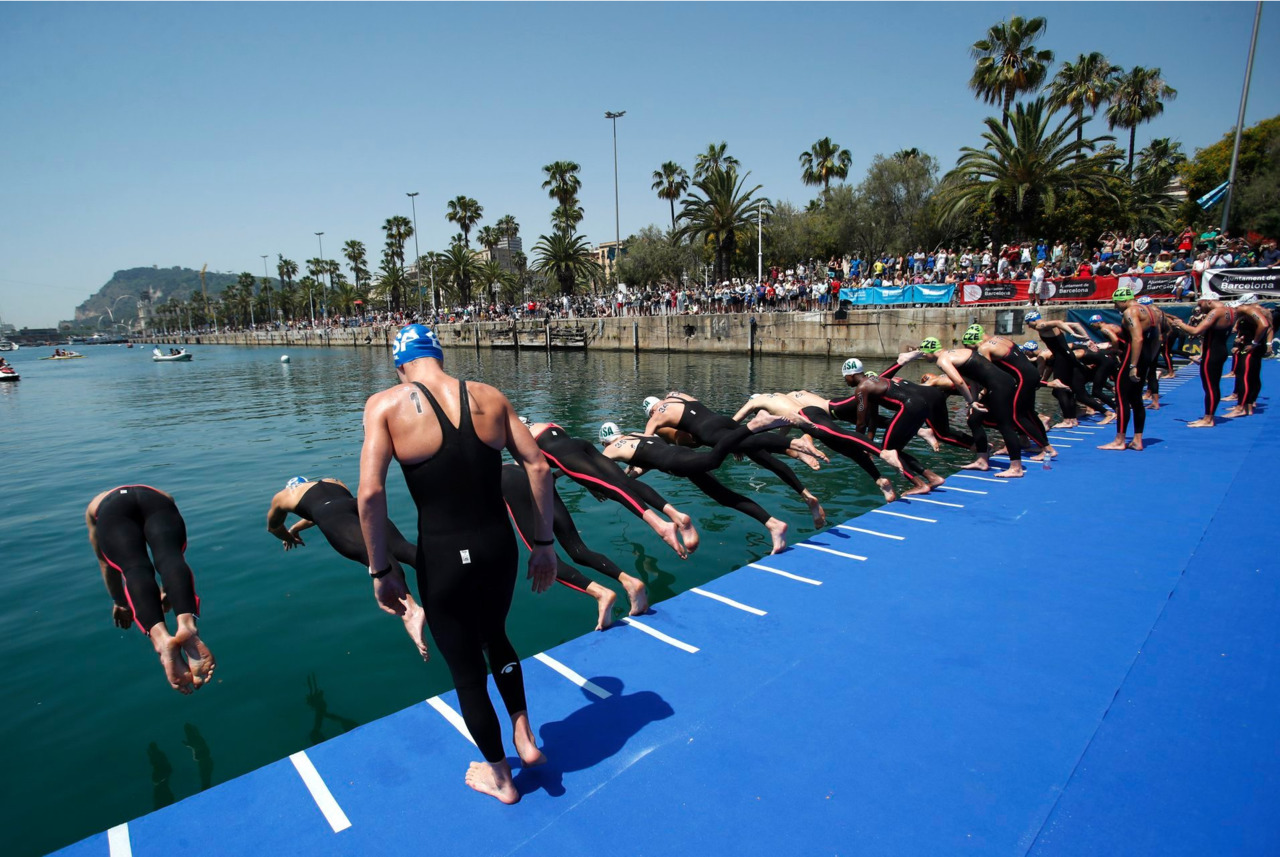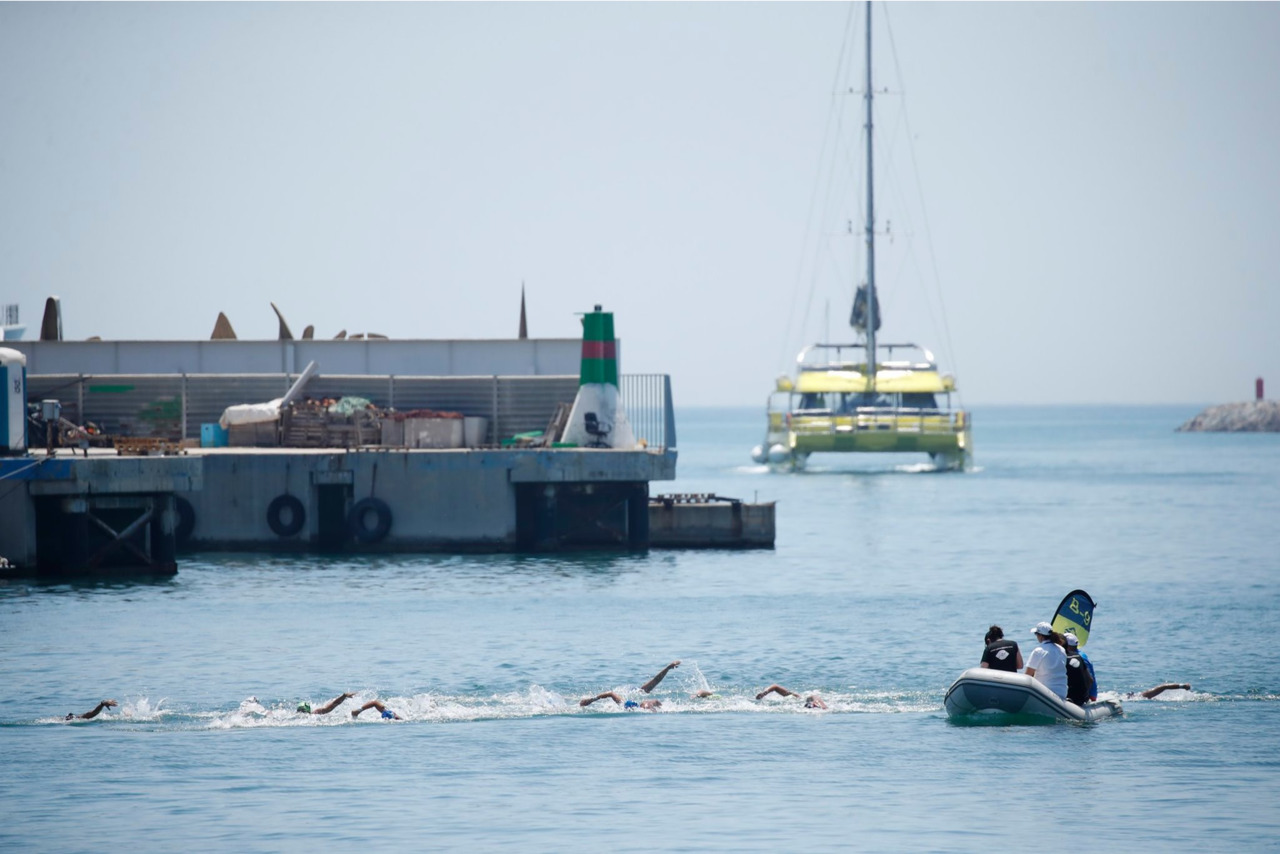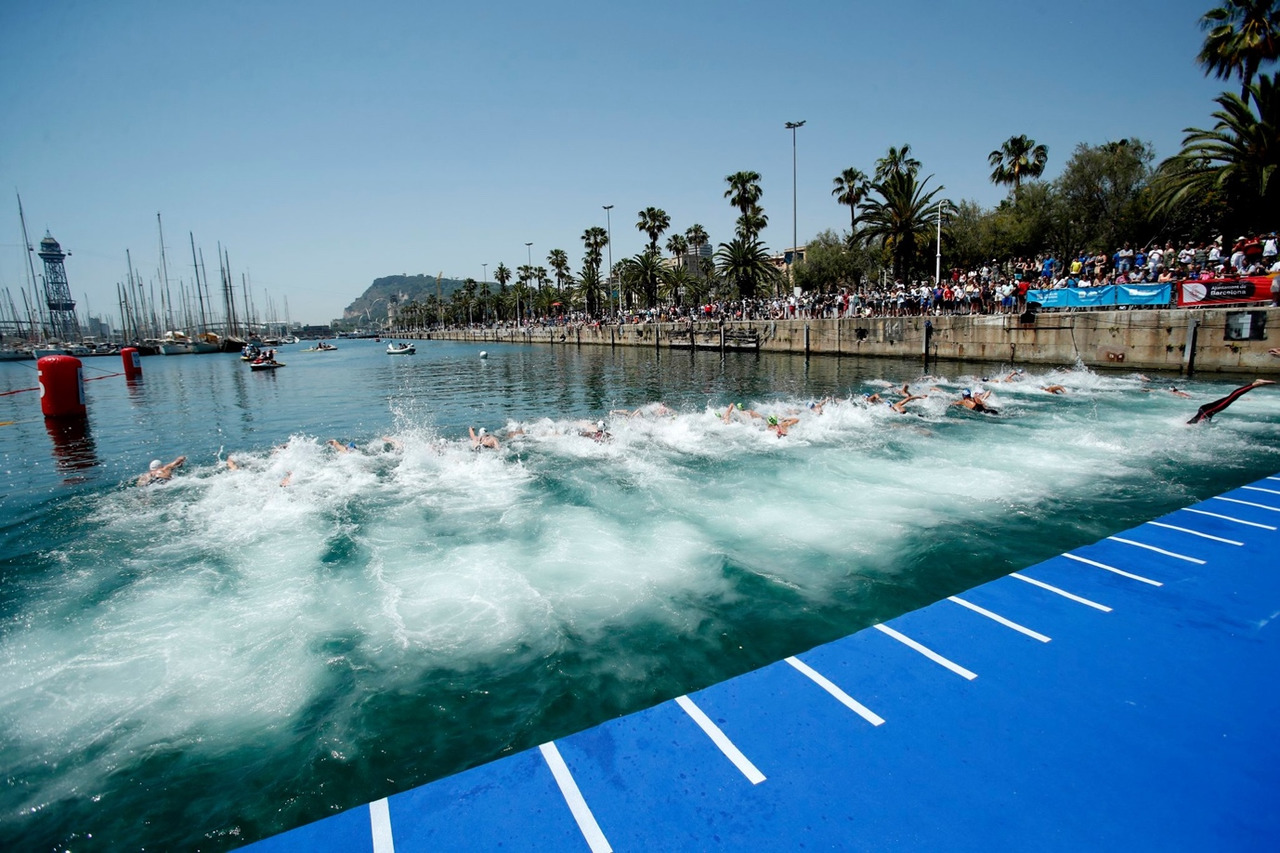
Бесплатный фрагмент - A comprehensive manual for elite open water swimmers
A comprehensive manual for elite open water swimmers
Table of Contents:
Chapter 1: Introduction
♦ The Importance of Open Water Swimming
♦ Goals and Objectives
Chapter 2: Training Principles
♦ Periodization and Season Planning
♦ Individualized Training Plans
♦ Dry-land Training
♦ Nutrition and Hydration
Chapter 3: Technique and Skills
♦ Open Water Specific Techniques
♦ Stroke Mechanics
♦ Starts and Turns
♦ Navigating Currents and Waves
Chapter 4: Race Strategy
♦ Pacing Strategies
♦ Positioning and Drafting
♦ Feeding and Hydration During Races
♦ Handling Unpredictable Conditions
Chapter 5: Mental Preparation
♦ Goal Setting
♦ Visualization and Mental Imagery
♦ Coping with Race Anxiety
♦ Developing Mental Toughness
Chapter 6: Equipment and Gear
♦ Wetsuits vs. Swimsuits
♦ Goggles and Caps
♦ Safety Gear
♦ Technology and Wearables
Chapter 7: Open Water Safety
♦ Assessing Environmental Conditions
♦ Swimming in Different Types of Water Bodies
♦ Emergency Protocols and First Aid
Chapter 8: Recovery and Injury Prevention
♦ Importance of Recovery
♦ Techniques for Recovery
♦ Injury Prevention Strategies
♦ Dealing with Common Swimming Injuries
Chapter 9: Nutrition and Hydration
♦ Pre-Race Nutrition
♦ During-Race Nutrition
♦ Post-Race Recovery Nutrition
♦ Hydration Strategies
Chapter 10: Monitoring and Performance Analysis
♦ Data Tracking and Analysis
♦ Using Technology
♦ Collaborating with Coaches and Sports Scientists
Chapter 11: Career and Lifestyle Management
♦ Balancing Swimming with Life
♦ Sponsorships and Financial Considerations
♦ Post-Swimming Career Planning
Chapter 12: Resources and Support
♦ Coaches and Training Staff
♦ Sports Medicine and Physical Therapy
♦ Sports Psychology
♦ Support from Family and Friends
Appendices
Chapter 1: Introduction
1.1 The Importance of Open Water Swimming
Open water swimming is a unique and challenging discipline within the world of aquatics. Unlike pool swimming, open water events take place in natural bodies of water such as oceans, lakes, rivers, and even channels. It demands a combination of physical fitness, mental resilience, and a deep understanding of the aquatic environment.
Elite open water swimmers are athletes who have honed their skills and abilities to compete at the highest levels in this demanding sport. They tackle races of varying distances, often navigating through unpredictable conditions, tides, currents, and even marine life. Success in open water swimming requires not only exceptional physical prowess but also the ability to adapt and strategize in the face of ever-changing challenges.

1.2 Goals and Objectives
The primary objective of this manual is to provide elite open water swimmers with a comprehensive resource to enhance their training, performance, and overall understanding of the sport. It encompasses various aspects of open water swimming, including training principles, technique, race strategy, mental preparation, safety, equipment, nutrition, and more.
♦ Developing Skills: Elite open water swimmers aspire to master a wide range of skills, from efficient stroke mechanics to expert navigation in open water conditions. This manual aims to guide swimmers in refining these skills to the highest level.
♦ Optimizing Training: Training for open water swimming requires careful planning and periodization. Elite swimmers must understand how to structure their workouts and conditioning routines effectively. This manual provides insights into training principles and program design.
♦ Race Success: The ultimate goal of elite open water swimmers is to perform at their best during races. Strategies for race preparation, pacing, and tactical decisions are discussed to help swimmers excel on the competitive stage.
♦ Safety: Open water swimming carries inherent risks, including exposure to natural elements and potential encounters with wildlife. Understanding and mitigating these risks is paramount for the safety of the athlete. This manual provides guidance on safe open water practices.

♦ Holistic Approach: Success in open water swimming extends beyond physical fitness. Mental preparation, nutrition, recovery, and lifestyle management are integral components of an elite swimmer’s journey. This manual explores these aspects comprehensively.
It’s essential to note that elite open water swimmers are constantly evolving their approach to the sport. This manual serves as a foundational resource, but the guidance within should be integrated with personalized coaching and the latest research and developments in the field. The journey to becoming an elite open water swimmer is demanding, but with the right knowledge and dedication, it can lead to extraordinary achievements in the world of aquatic sports.

Chapter 2: Training Principles
2.1 Periodization and Season Planning
Periodization is a fundamental concept in the training of elite open water swimmers. It involves dividing the training year into distinct phases, each with its own focus and objectives. Effective periodization ensures swimmers peak at the right times and avoid burnout.
It is based on the principles of multilateral development, specialization, variety and long-term training. Out of those, the first three are necessary for optimizing physiological factors, whereas long-term planning provides the athlete during with gradual improving of physical performance in the course of time. In the periodization, the training process is distributed in time intervals, the magnitude of which may range from days to weeks, months or even years. During each of these time intervals, a particular element of performance is accented (e.g physical fitness, technique etc.) and time intervals must respect the main tasks of ATC macrocycle — performance development, stabilization or tapering. The original idea of periodization is the basis of training process planning for all age categories or performance levels.
Key elements of periodization include:
♦ Macrocycle: The annual training plan, typically divided into preparation, competition, and transition phases.
♦ Mesocycle: Several weeks to a few months within the macrocycle, each with specific goals. This includes base training, strength development, speed work, and tapering.
♦ Microcycle: Weekly training cycles that specify the daily workouts, volume, and intensity.
2.2 Individualized Training Plans
Elite open water swimmers benefit from individualized training programs tailored to their strengths, weaknesses, and competition schedules. Coaches collaborate with swimmers to design programs that include:
♦ Training Volume: The distance and duration of training sessions, adjusted based on the swimmer’s endurance capacity and goals.
♦ Intensity: The level of effort, often categorized using heart rate zones or perceived exertion. Intensity varies throughout the training cycle.
♦ Stroke Specificity: Focus on the primary stroke used in open water races, typically freestyle. Technical drills are integrated to enhance stroke efficiency.
2.3 Dry-Land Training
Dry-land training is a critical component of an elite open water swimmer’s regimen. Coaches should incorporate swimming dryland training to maximize swimmer performance. The type of swimming dryland training may change over time, perhaps incorporating more weights once the athlete reaches the collegiate level, but all programs should incorporate dryland workouts. The purpose of dryland training for swimming is to improve the swimmer’s power, athleticism, and overall speed in the pool. It complements pool training and includes:
♦ Strength Training: Targeting muscle groups used in swimming, with a focus on the core, shoulders, and upper body.
♦ Flexibility and Mobility: Stretching and mobility exercises to enhance range of motion and prevent injuries.
♦ Plyometrics and Power Development: Exercises to improve explosive strength and streamline dives and turns.
2.4 Nutrition and Hydration
Nutrition plays a pivotal role in an elite open water swimmer’s performance and recovery:
♦ Pre-Race Nutrition: Timing and composition of meals and snacks before a race to optimize energy stores.
♦ During-Race Nutrition: Strategies for maintaining energy and hydration during long-distance races, including feeding schedules.
♦ Post-Race Recovery Nutrition: Refueling and rehydration after races and intense training sessions to support muscle recovery.
2.5 Monitoring and Performance Analysis
Swimming can be classified as a complex task because it cannot be mastered in a single session and has multiple degrees of freedom. Learning such a complex physical activity and mastering the optimal technique for its execution depend on the continuous assessment of its performance. When it comes to complex tasks in sport, augmented extrinsic feedback has been shown to be necessary and effective for the athlete progress and development, regardless of the feedback modality. Therefore, the goal for successful coaching in swimming is clear: provide high-quality feedback concurrently or shortly after the activity on a frequent basis.
Elite open water swimmers rely on data and feedback to fine-tune their training:
♦ Data Tracking: Using technology such as GPS devices, heart rate monitors, and swim metrics to analyze training data.
♦ Performance Analysis: Regular assessments of stroke technique, race times, and fitness levels to identify areas for improvement.
♦ Collaboration: Working closely with coaches and sports scientists to interpret data and make necessary adjustments to training plans.
As in any other sport, swimming coaches rely mainly on their observations and coaching experience to monitor and evaluate swimmers’ performance. However, such subjective and qualitative analysis is not accurate enough to provide precise information about a swimmer’s strengths and weaknesses. The complex nature of swimming has also led the research community to study it with new tools and systems from different perspectives, such as physiology, motor control, and biomechanics. As a result, more attention has been paid to the use of sophisticated analytical systems by both researchers and coaches to obtain an objective and quantitative assessment of swimming performance. Despite all the novel analysis methods that have been proposed for swimming analysis, there is a lack of an appropriate analysis system that can help both coaches and swimmers in better performance analysis. Video-based systems, most commonly used as the gold standard in swimming, suffer primarily from shortcomings such as the time-consuming process of calibrating and digitizing landmarks, image distortion due to water reflections and air bubbles, and small capture volume in aquatic environments. In contrast, ease of use, accessibility, easy-to-understand results, and feedback are the top four priorities of coaches in an analysis system.
Training for elite open water swimming is an ongoing process of refinement and adaptation. Swimmers and their coaches must continuously assess progress and make adjustments to achieve peak performance. In the chapters that follow, we delve deeper into the specifics of technique, race strategy, mental preparation, equipment, and safety, all of which contribute to the comprehensive preparation of elite open water swimmers.
Chapter 3: Technique and Skills
3.1 Open Water Specific Techniques
Open water swimming demands specialized techniques to navigate the challenges of natural bodies of water. Elite open water swimmers must master the following skills:
♦ Drafting: Learning to swim closely behind or beside competitors to reduce water resistance and conserve energy, a crucial tactic for long races.
♦ Sighting: Developing the ability to periodically lift your head to sight landmarks or buoys, ensuring you stay on course in open water with minimal disruption to your stroke.
♦ Turning Buoys: Techniques for efficiently rounding buoy markers during races, including approaches and exit strategies.
♦ Navigation: Navigating currents, waves, and swells while maintaining course awareness during races, adapting strokes as needed.
3.2 Stroke Mechanics
Efficient stroke mechanics are essential for open water swimmers. Key considerations include:
♦ Freestyle Technique: A focus on the freestyle stroke as it’s the primary stroke used in open water. Improving stroke efficiency through drills and practice.
♦ Bilateral Breathing: Developing the ability to breathe comfortably on both sides, ensuring flexibility and adaptability in race conditions.
♦ Rhythmic Breathing: Coordinating breaths with the natural rhythm of the stroke to maintain a smooth pace.
♦ Kicking Efficiency: Training the legs for a steady and efficient kick, which helps with stability and propulsion.
3.3 Starts and Turns
Elite open water swimmers must optimize their starts and turns, even though these elements are less frequent than in pool swimming:
♦ Race Starts: Strategies for diving off the starting platform or from the shore with minimal time and energy loss.
♦ Buoy Turns: Techniques for navigating buoy turns efficiently, considering positioning and drafting opportunities.
3.4 Navigating Currents and Waves
Open water conditions are often unpredictable. Elite swimmers must adapt to various water conditions, including:
♦ Currents: Understanding how to swim with or against currents, making necessary adjustments to stay on course.
♦ Waves and Swells: Techniques for swimming efficiently in choppy waters, including body positioning and stroke adjustments.
♦ Sighting in Challenging Conditions: Strategies for sighting in turbulent water with limited visibility.
3.5 Fine-Tuning Skills
Elite open water swimmers dedicate time to fine-tune their skills:
♦ Simulated Open Water Training: Incorporating open water simulation sessions in the pool or controlled environments to practice race-specific skills.
♦ Group Training: Training with other swimmers to simulate race scenarios, including drafting and navigation challenges.
♦ Underwater Skills: Developing underwater orientation skills for improved navigation and buoy turns.
Effective mastery of these techniques and skills is essential for success in open water swimming. Swimmers should continuously refine these abilities through practice, drills, and feedback from coaches. In the chapters that follow, we explore the intricacies of race strategy, mental preparation, equipment selection, and safety measures that contribute to the holistic preparation of elite open water swimmers.
Chapter 4: Race Strategy
4.1 Pacing Strategies
Pacing is a critical aspect of open water races. Elite swimmers employ various strategies to optimize their performance:
♦ Negative Split: Starting at a controlled pace and gradually increasing speed throughout the race to finish strong.
♦ Even Pacing: Maintaining a consistent pace throughout the race to conserve energy and minimize fatigue.
♦ Variable Pacing: Adjusting speed based on course conditions, competitors, and race objectives, making tactical surges or tempo changes as needed.
4.2 Positioning and Drafting
Бесплатный фрагмент закончился.
Купите книгу, чтобы продолжить чтение.